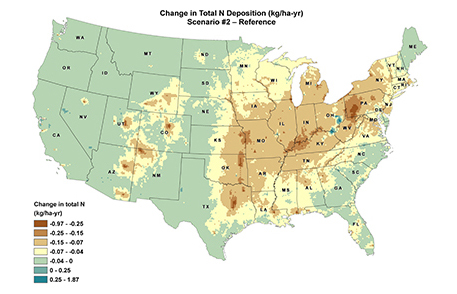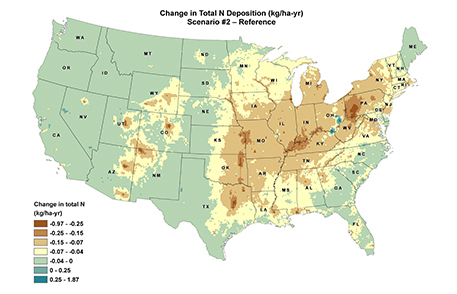Study Assesses Co-Benefits of EPA's Clean Power Plan Carbon Standards for Power Plants
Clients
Harvard Forest
In June 2014, EPA proposed the Clean Power Plan, which aimed to take action on climate change by reducing carbon dioxide (CO<sub>2</sub>) emissions from existing power plants by 30% by 2030. The plan’s new carbon standards for the energy sector will also reduce emissions of co-pollutants such as nitrogen oxides (NO<sub>x</sub>) and sulfur dioxide (SO<sub>2</sub>), thereby improving local air quality and decreasing atmospheric deposition of sulfur and nitrogen.
<br>
To evaluate the potential co-benefits of the proposed rule for ecosystems and human health, Sonoma Technology worked with Harvard and Syracuse university researchers to quantify the impact of three alternative policy scenarios on pollutant emissions, air quality, and surface deposition of sulfur and nitrogen. Each scenario reflected different carbon standards of varying stringency and flexibility. Sonoma Technology performed air quality modeling with the CMAQ model to test how atmospheric pollutant concentrations and surface deposition levels varied by scenario. Sonoma Technology also worked with our university partners to evaluate the co-benefits of the Final Clean Power Plan.
<br>
Findings from this project are available on <a href="https://www.nature.com/nclimate/journal/v5/n6/full/nclimate2598.html" target="_blank">Nature.com</a href>.
<br>
To evaluate the potential co-benefits of the proposed rule for ecosystems and human health, Sonoma Technology worked with Harvard and Syracuse university researchers to quantify the impact of three alternative policy scenarios on pollutant emissions, air quality, and surface deposition of sulfur and nitrogen. Each scenario reflected different carbon standards of varying stringency and flexibility. Sonoma Technology performed air quality modeling with the CMAQ model to test how atmospheric pollutant concentrations and surface deposition levels varied by scenario. Sonoma Technology also worked with our university partners to evaluate the co-benefits of the Final Clean Power Plan.
<br>
Findings from this project are available on <a href="https://www.nature.com/nclimate/journal/v5/n6/full/nclimate2598.html" target="_blank">Nature.com</a href>.
Air Quality
Applied Research
Climate
Emissions
Policy and Planning
Industrial Monitoring


Kenneth J. Craig

Kenneth
J.
Craig
Manager, Atmospheric and Emissions Modeling Group / Principal Scientist
kcraig@sonomatech.com
/sites/default/files/2023-02/KJCres.pdf
